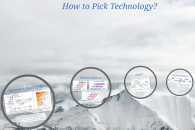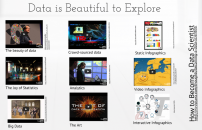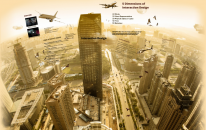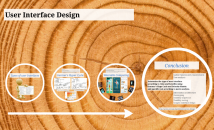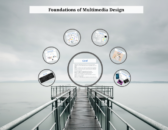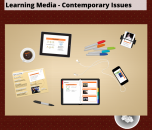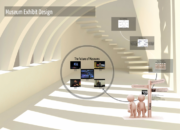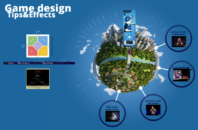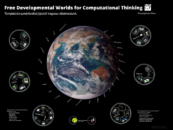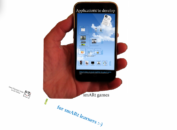Chapters
Scope
Definitions
The computer accesses a computer-simulated world and presents perceptual stimuli to the user, who in turn can manipulate elements of the modelled world and thus experience a degree of telepresence. Such modelled worlds and their rules may draw from the reality or fantasy worlds. Example rules are gravity,topography, locomotion, real-time actions, and communication. Communication between users can range from text, graphical icons, visual gesture, sound, and rarely, forms using touch, voice command, and balance senses.
Massively multiplayer online games (also called MMO and MMOG) is a multiplayer video game which is capable of supporting large numbers of players simultaneously. By necessity, they are played on the Internet. MMOGs depict a wide range of worlds, including those based on fantasy, science fiction, the real world, super heroes,sports, horror, and historical milieus. The most common form of such games are fantasy worlds, whereas those based on the real world are relatively rare.
Massively multiplayer online role-playing game (MMORPG) is a genre of role-playing video games or web browser based games in which a very large number of players interact with one another within a virtual game world. Many MMORPGs have real-time actions and communication. Players create a character who travels between buildings, towns, and worlds to carry out business or leisure activities. Communication is usually textual, but real-time voice communication is also possible. The form of communication used can substantially affect the experience of players in the game. The most popular educational use of virtual world is for language learning.
“Immersion” into virtual reality is a metaphoric use of the experience of submersion into water applied to representation, fiction or simulation. The term is widely used for describing partial or complete suspension of disbelief enabling action or reaction to stimulations encountered in a virtual or artistic environment. The degree to which the virtual or artistic environment faithfully reproduces reality determines the degree of suspension of disbelief. The greater the suspension of disbelief, the greater the degree of Presence achieved.
Virtual reality (VR) is a computer-simulated environment that can simulate physical presence in places in the real world or imagined worlds. Most current virtual reality environments are primarily visual experiences, displayed either on a computer screen or through special stereoscopic displays, but some simulations include additional sensory information, such as sound through speakers or headphones. Some advanced, haptic systems now include tactile information, generally known as force feedback, in medical and gaming applications. Furthermore, virtual reality covers remote communication environments which provide virtual presence of users with the concepts of telepresence and telexistence or a virtual artifact (VA) either through the use of standard input devices such as a keyboard and mouse, or through multimodal devices such as a wired glove, the Polhemus, and omnidirectional treadmills.
Telepresence refers to a set of technologies which allow a person to feel as if they were present, to give the appearance of being present, or to have an effect, via telerobotics, at a place other than their true location.
Telepresence requires that the users’ senses be provided with such stimuli as to give the feeling of being in that other location. Additionally, users may be given the ability to affect the remote location. In this case, the user’s position, movements, actions, voice, etc. may be sensed, transmitted and duplicated in the remote location to bring about this effect. Therefore information may be traveling in both directions between the user and the remote location.
A popular application is found in telepresence videoconferencing, the highest possible level of videotelephony. Telepresence via video deploys greater technical sophistication and improved fidelity of both sight and sound than in traditional videoconferencing. Technical advancements in mobile collaboration have also extended the capabilities of videoconferencing beyond the boardroom for use with hand-held mobile devices, enabling collaboration independent of location.
References: Definitions and links (unless otherwise indicated as “site” or “pdf”) are copied and edited from English Language Wikipedia as of 1st September 2013. Titles could be further explored through indicated links.
Research
Design issues
Case-studies
T@T lab case-studies:
M., Turcsányi-Szabó, P. Simon, A. Abonyi-Tóth, N. Ekker, Step-wise immersion bridging two universities, ed. Jose Jesus García Rueda, María Blanca Ibáñez Espiga, Proceedings of iED Summit, pp. 141-150, ISBN: 978-84-89315-66-2
(see TSZMarta2.pdf)
MOMELTE Step-wise Immersion project: https://prezi.com/fsvki5z7hg5x/momelte-projekt-step-wise-immersion/
M., Turcsányi-Szabó, P. Simon, A. Abonyi-Tóth, N. Ekker, Zs. Ruttkay, Augmenting Experiences – a Bridge Between Two Universities, Proceedings of ISMAR 2011, 2011. (IEEE publication)
(see Turcsanyi_Ruttkay.pdf)
Turcsányi-Szabó,M., Csízi, L., Végh,L., Virtual worlds in education – best practice, design and research considerations, Journal of Teaching Mathematics and Computer Science, University of Debrecen, 2012., Vol/issue 10/2 (2012), pp. 309-323. ISSN 1589 – 7389. http://tmcs.math.klte.hu/Contents/2012-Vol-X-Issue-II/06-tmcs-turcsanyi-abstract.pdf
(see VV_in_education_2011_final.pdf)
Turcsányi-Szabó,M., Abonyi-Tóth, A., Ekker,N., Building a Virtual Framework to Exploit Multidisciplinary Project Workshops – peaks & pits, Journal of Teaching Mathematics and Computer Science, University of Debrecen, (accepted 2013)
(see tmcs_tszm_ata_en_final2.pdf)
- Marcell Szabó: Interactive learning in OpenSim (see opensim_study_O-I.pdf)
- Marcell Szabó MSc Thesis: Development possibilities and limitations in virtual worlds with regards to informal learning (see thesisMSc.pdf)

